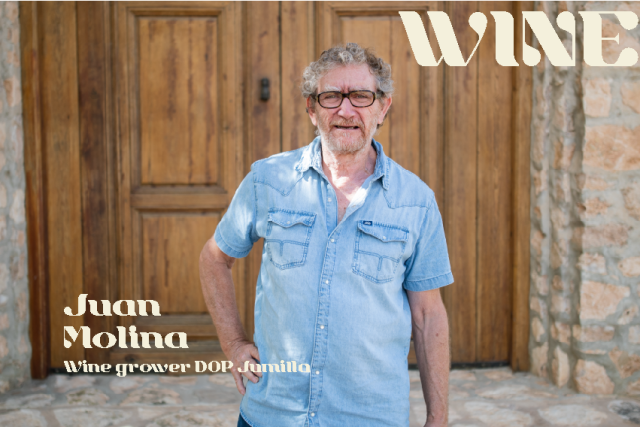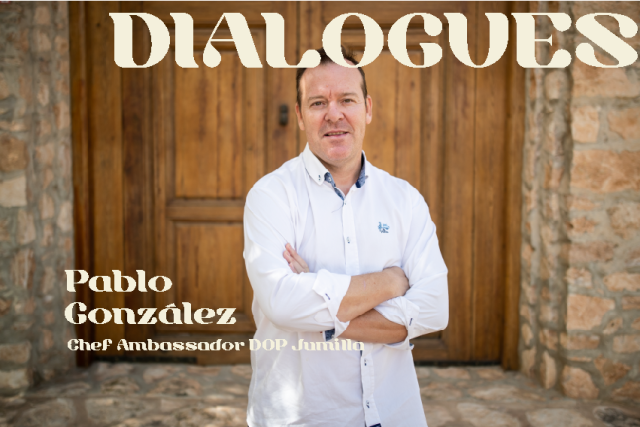This website uses cookies so that we can provide you with the best user experience possible. Cookie information is stored in your browser and performs functions such as recognising you when you return to our website and helping our team to understand which sections of the website you find most interesting and useful.
Jumilla presents first instalment of new documentary: ‘Dialogues of Art and Wine’
A new video from DO Jumilla highlights the connection between viticulture and art by bringing together three experts across different crafts.

DO Jumilla, a leading wine producing region sitting between the region of Murcia and Albacete province with a reputation for a climate and territory well suited to the production of naturally organic and sustainable wines, has produced a new documentary series bringing together art and winemaking.
The first chapter, called ‘Harvest’, has three parts — ‘The Meeting’, ‘The Inspiration’ and ‘The Piece of Art’. It also introduces the documentary’s three artists:
Pablo Gonzalez-Conejero: a Michelin-star chef and ambassador for the Jumilla wine appellation; Juan Molina: a wine grower and pioneer in biodynamic wine production, and Elena Gómez de Valcárcel, a ceramics and emotional design artist.
The purpose of the project is to highlight the pure thought, pure heart and imagination of the creators, working with the highest intentions of representing nature and tradition, and to highlight their work as people of the Jumilla region linking their shared sense of belonging to the territory. All three crafts draw from tradition, land and culture, but also look forward and embrace modern technology to allow their food, wine and art to be given refined and authentic expression.

The documentary’s first part aired on Thursday 16 February on the Jumilla appellation’s social media channels. It tells of the first meeting between the artists and about the art of winemaking in the Jumilla wine territory with the grape harvest as the starting point, and how it inspires the design artist, Elena Gómez de Valcárcel, to create a unique ceramic piece of art for this project.
The output from this first conversation is the mutual creation of a unique piece of ceramic art designed to communicate the common thoughts, feelings and goals shared by the three creators.
The name of the final piece is ‘Transition’; which is a representation of a multitude of details and metaphors.

Pablo González-Conejero explains: “The transition of the sky-blue colours of Jumilla and of the Monastrell grape comes together with the two openings with eight mouths that form a star, inspired by the lunar cycles of the biodynamic method of winemaking that Juan Molina contributes, as well as Elena’s inspiration which references Plato’s Symposium to create a perfect union between the winemaking process and these conversations about art, creativity and emotions. These three main characters all conclude, that without passion or love, there would be no enjoyment in any project related to wine, gastronomy or art.”
The project will continue to grow over the next few months, where other art forms will play a part, including music, architecture and literature.

Silvano García, the President of the Jumilla appellation, is happy with the development and the presentation of this project “that vindicates the work of the grape harvest and the creativity of the winegrowers and winemakers to the point that their work can inspire different artists to give meaning to our wines beyond enjoying them at a table”.
Please visit www.jumilla.wine/arte-y-vino to view how the Jumilla wine appellation values the creativity of winemaking and viticulture by connecting the world of wine with the world of design, arts and crafts and gastronomy.
Jumilla wine appellation boasts of a winemaking tradition that goes back to the remains of vitis vinifera – together with utensils and archaeological remains found in Jumilla originating from 3000 BC making them the oldest in Europe.
The wine production area, at altitudes varying between 320 and 1000 metres and lined with mountains up to 1380 metres, is delineated, on the one hand, by the furthest south-eastern part of the province of Albacete, that includes the municipalities of Hellín, Montealegre del Castillo, Fuente Álamo, Ontur, Albatana and Tobarra and on the other, by the northern part of the province of Murcia, with the municipality of Jumilla.
A total of 22,000 hectares of vineyards is mostly dry-farmed, and located on predominantly limestone soil. The low rainfall that barely reaches 300 mm per year and the 3000+ hours of sunshine create the ideal conditions for organic farming for this appellation.
Related news
On the twelfth day of Christmas
Burgundy 2023 en primeurs: cautious optimism
SWR: lighter bottles for entry level wines is 'the wrong message'

